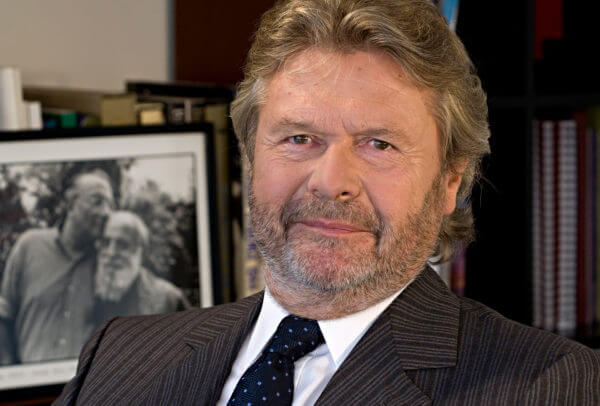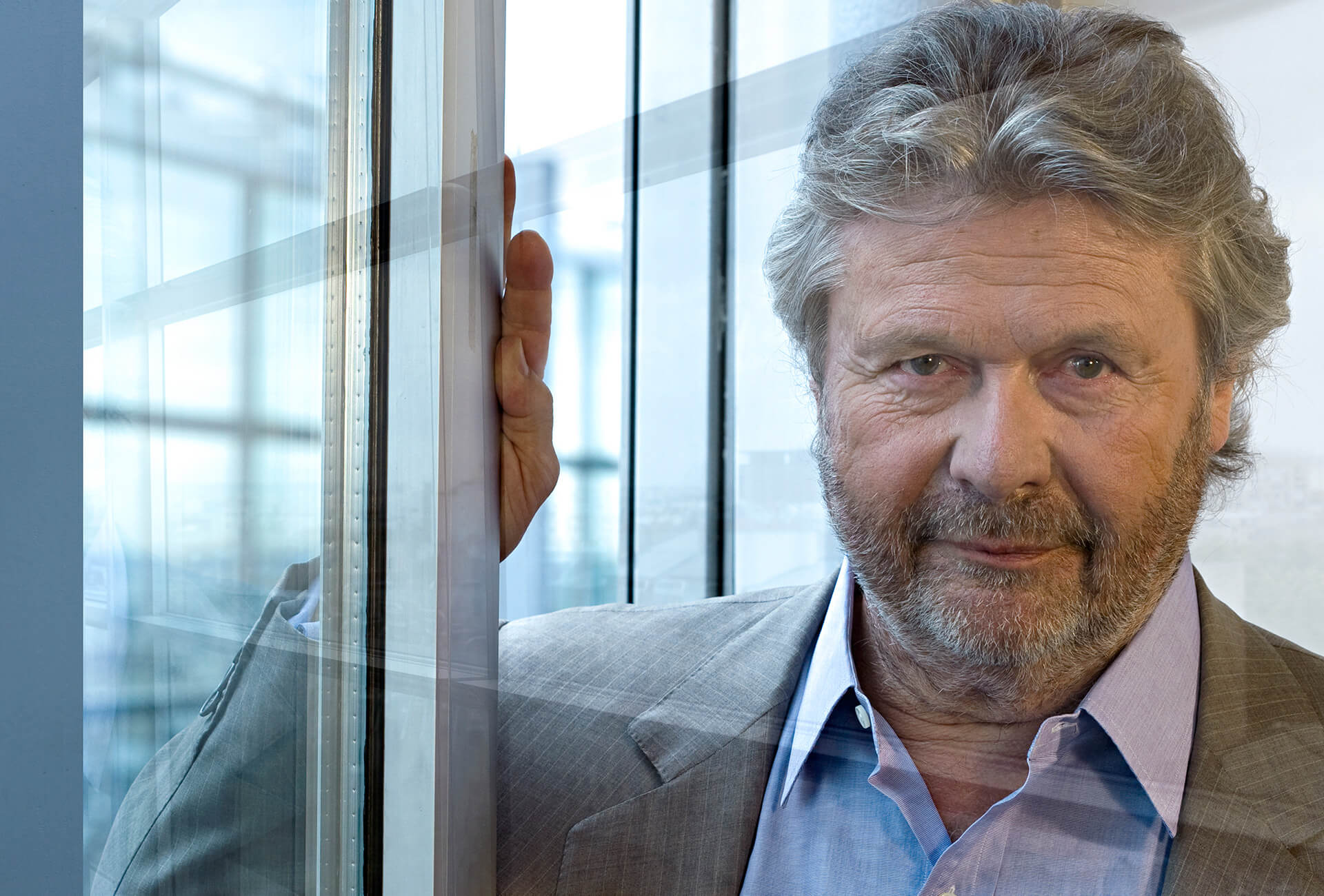Summer for Cartier begins with Ocean’s 8 and a starring role for the company, which holds a commanding position in the Richemont group. Renowned for its jewellery and timepieces, Cartier was a natural choice to supply the film’s production with the “Toussaint”, a magnificent necklace inspired by an equally stunning piece which the Maharajah of Nawanagar commissioned from Jacques Cartier in 1931. Crafted in Cartier’s Paris workshops over a period of eight weeks, its on-screen value of $150 million makes it an irresistible target for a heist. There is, however, one important difference between the two jewels: the diamonds in the film, whose “co-stars” include Kate Blanchett, Anne Hathaway, Sandra Bullock and Rihanna, are in fact zirconium oxides mounted in white gold. Even then, this is every prop master’s dream!
Needless to say, Cartier is in its element among such glitz and glamour, although this hasn’t always been the case. The early 1970s were hard times for the company; serious enough to warrant “unconventional solutions”, we’re told in The Cartier Tank Watch, the latest tome to tell the story of this legendary and now centenarian timepiece, created in 1917. Thus Cartier granted Robert Hocq – a talented entrepreneur at the head of Silver Match, a successful cigarette lighter firm, – a licence to market a product under its name. Cigarette lighters were a major status symbol at that time, and in 1968 an oval Cartier lighter was launched featuring an innovative retractable spark wheel. Sales exceeded all expectations, a prelude to the Must de Cartier adventure that began five years later. The stage was set for Cartier to make its comeback.

One of the protagonists of this revival was Alain-Dominique Perrin, whom Robert Hocq recruited for Cartier’s lighter division, Briquets Cartier, in 1969. Twelve months later, age 28, he was managing director. Hocq and Perrin were joined by business entrepreneur Joseph Kanoui, and together the three men formed the triumvirate that would revive Cartier’s fortunes. The deal to buy Cartier Paris went through in 1972, the first step in a slow reconstruction process that included the acquisition of Cartier London in 1974 and Cartier New York in 1976. At the same time, the strategy that would turn Cartier around was put in place, with Alain-Dominique Perrin at the helm. From that point on, his career would be tied to that of the firm. In 1981 he became Chairman of what was now Cartier International, a position he would hold for the next twenty years. We met Alain-Dominique Perrin in Paris at the Fondation Cartier pour l’art contemporain which he set up as long ago as 1984.
Alain-Dominique Perrin: In 1969, Cartier was a very small concern; a brand carried by just a handful of stores in Paris, Hong Kong, Geneva and Munich. Cartier London and Cartier New York were no longer part of the group, and a lot of people regretted this scission. The brand was in urgent need of a more modern image, which of course had to respect its DNA. It was a question of restoring Cartier to its former glory without destroying everything that had gone before. Everyone was talking about one man whose success overshadowed virtually anything anyone else was doing. That man was the couturier Pierre Cardin, a gifted communicator whose business model revolved around licensing agreements: more than two thousand worldwide. Chanel adopted the same strategy, though to a lesser extent. I personally knew Pierre Cardin well, and it soon became clear to me that while others thought it was the perfect concept, it was the exact opposite of what we should do. In fact I said as much in my “red book” for Robert Hocq. There was a lot of poking fun at this marketing plan, which of course everyone called the “little red book” in reference to you know who, but this was the strategy we put in place to relaunch Cartier, starting with lighters.
In 1970 I was at the head of Briquets Cartier. I put them into high-end tobacconists, jeweller’s and cigar shops. Davidoff in Geneva was one. Sales soon took off but, as I said, there was never any question of granting licenses. The idea was to keep the brand under control, from creation to distribution, and this is exactly what we did with the lighters, which we manufactured ourselves. This initial success was sufficient proof that the Cartier name could work its magic outside its traditional areas of expertise. This planted the idea to move into other areas such as leathergoods, pens, fragrances and, of course, watches with products that were affordable, desirable for every day, but still exclusive and representative of Cartier’s values of craftsmanship and quality. This was the entire concept behind the Must which we absolutely had to export globally. And what do you think really set the ball rolling? The launch in 1977 of silver gilt Must watches, including a Must de Cartier Tank that retailed for $500. They were a huge success in the markets, especially the United States. The Must put Cartier back on track. Just to give you an idea, when I started at Cartier, the brand had sold a grand total of 3,000 watches. By the end of the 1970s we had exceeded the 160,000 mark.

Thanks to the Must, we were able to bring more products into the relaunch. In 1978, for example, we brought the Santos up-to-date with gold as well as gold and steel versions. They flew off the shelves, selling some 600,000 units in fifteen years. We were working a lot with Pierre-Alain Blum, head of Ebel which made our watches back then. The silver gilt Must watches and the Santos were quickly followed by the Panthère then the Pasha, designed by Cartier. The Panthère, which is the absolute epitome of Cartier’s values, progressed at an unbelievable rate, selling 600,000 units in no time at all. Similarly with leathergoods, where our burgundy red took the market by storm, and again in fragrances. Not forgetting fine jewellery, where we invested heavily to put Cartier back centre-stage. If I had to sum it up, I’d say the 1970s and the following two decades were happy times, alongside Franco Cologni who joined us after setting up Cartier’s Italian subsidiary. It was also a period of hard work from the teams, immense creativity and a relentless battle against the competition and fakes. You see, we almost always launched our products with one or other brand in mind. A means of showing that we could do better and that we had stronger appeal. We made a lot of friends during this time, celebrities who lent us their support such as Elton John, Tina Turner, Richard Gere, BB King, James Brown or Roger Moore for watches. And the list goes on. I say friends because some of them really did become friends, but also because at that time we didn’t pay them a fee. We gave them Cartier products as a thank-you.
From an early stage we were equipping the Must watches with quartz movements, which were the perfect technology for these younger, more affordable collections that matched the mood of the day. Same thing for the Panthère. In those days, women didn’t worry too much about the movement inside their watch, as long as it was reliable. It wasn’t until 1997, for Cartier’s 150th anniversary, that we began to phase out the various Must lines to bring the entire production back under the Cartier name. Times had changed, and Cartier was once again basking in the aura of a prestigious brand. This is more or less when we came back to watches with mechanical movements. We needed to show that Cartier had its rightful place in this aspect of watchmaking and that we were very much a part of that tradition. Also, since 1988 Cartier had been fully consolidated into the Richemont group, whose acquisition of Piaget and Baume & Mercier made clear its intention to develop its business in the Fine Watch segment. In 1992 we got our first factory where we assembled our watches and gradually brought the different professions under that one roof. Buoyed by success, we built our manufacture in La Chaux-de-Fonds and transformed the Fribourg factory to go from production of pens, carriage clocks and lighters to manufacturing watch parts. A good illustration of this progression is the Tank Française which we presented in 1996, assembled in Cartier’s manufacture and proposed in three sizes, in gold or gold and steel, with a choice of mechanical or quartz movements. Sales of this watch quickly exceeded the one million mark. Not wanting to blow our own trumpet, although it is tempting!, I think Cartier is the first company to have “slightly” unnerved Rolex by taking the market share Rolex didn’t have.
Absolutely. When you think how successful the Tank, the Santos, the Panthère, the Pasha, the Tank Française and more recently the Ballon Bleu are, you see that this is a brand which has risen to the fore with form watches, for the most part, whose values are sufficiently powerful to carry on from one era to the next. And we haven’t even mentioned the Trinity rings, or the Love and Juste un Clou collections. Cartier is number-one in its category for watches. More widely, Cartier with its four specialisations has become a leading name in luxury that has proved capable of evolving with the major changes of our modern world. It’s a force that’s sometimes been put to the test, but what a force it is today!















